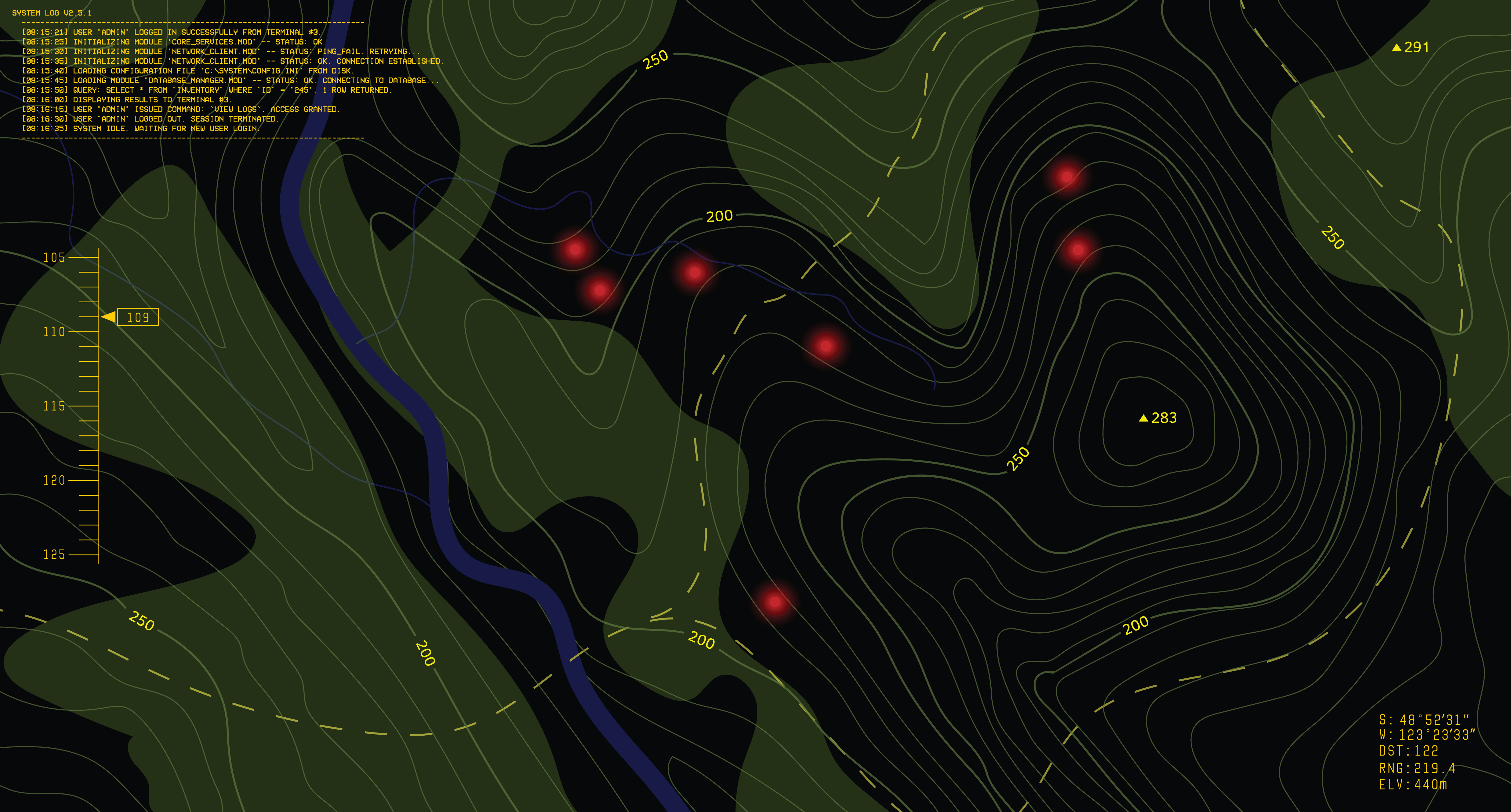Genetic algorithms (GAs) offer a powerful solution to the complex challenge of satellite mission planning. From task scheduling to constellation optimization, GAs enable rapid exploration of high-dimensional, multi-objective design spaces allowing planners to efficiently balance competing priorities and constraints.
As satellite constellations scale to thousands of nodes and mission windows shrink to minutes, the real question is no longer whether to adopt GA-based optimization, but whether your current implementation can keep pace with operational reality.
Why Use Genetic Algorithms for Satellite Mission Planning?
The move from manual or rule-based planning to GA-driven optimization isn’t just coming—it’s happening now. With the small satellite market expected to grow from $4.03 billion in 2024 to $17.63 billion by 2035, missions are getting more complex. More satellites, sensors, and constraints create challenges that traditional rule-based systems struggle to handle.
Genetic algorithms shine in these situations. Instead of trying every possible solution, GAs explore options intelligently, evolving toward near-optimal plans. They adapt automatically using fitness rules and evolutionary steps, avoiding the constant manual tweaks required by rigid systems.
GA-based frameworks can achieve up to 70% success in complex missions, balancing coverage, fuel, collision avoidance, and cost in a single run. They converge faster than exhaustive searches, scale better than mixed-integer programming, and work smoothly with surrogate models and machine learning. For planners tackling real-world complexity, GAs offer a proven, efficient, and mathematically grounded solution.
Core Components of GA-Based Planning
Key GA components encoding, fitness, selection, crossover, and mutation work together to optimize complex satellite missions efficiently.
Chromosome Encoding
At the heart of any GA is how mission parameters are represented as chromosomes. In satellite planning, a chromosome could encode:
- Imaging schedules
- Orbital assignments
- Sensor activation patterns
Effective encoding strikes a balance between expressiveness and computational efficiency. Too detailed, and the search space becomes huge; too simple, and solution quality suffers. For multi-satellite task allocation, permutation-based encodings with decoding heuristics often outperform direct assignment matrices, preserving diversity across generations.
Fitness Function Design
The fitness function translates mission objectives into numerical scores. For satellites, this might involve:
- Coverage and revisit times
- Data rates and power budgets
- Collision risk and constellation geometry
Single-objective functions require artificial weighting, while Pareto-based multi-objective GAs (MOGAs) preserve the full trade-off frontier. Hard constraints like orbital mechanics or sensor limits can be enforced with penalty functions, carefully calibrated to avoid dominating or stalling the search.
Selection, Crossover, and Mutation
- Selection: Tournament selection maintains diversity while favoring high-fitness individuals
- Crossover: Recombines parent chromosomes to inherit useful traits; problem-specific heuristics often outperform generic operators by preserving temporal order or orbital groupings
- Mutation: Introduces controlled randomness to explore new regions; adaptive rates are high early for exploration and lower later for fine-tuning
Balancing these operators determines the GA’s exploration-exploitation trade-off. Too much exploration wastes time; too much exploitation risks local maxima. Modern meta-GAs, which evolve operator parameters automatically, reduce manual tuning and improve convergence efficiency.
Application Areas in Satellite Mission Planning
Genetic algorithms are versatile tools that can optimize nearly every aspect of satellite missions—from scheduling tasks to designing constellations and minimizing revisit times. Their strength lies in exploring many possible solutions, adapting to changes, and delivering results that work in real operational conditions.
Task Scheduling
Scheduling imaging tasks, communication passes, and data downlinks can quickly get complex. Each satellite must respect:
- Visibility constraints
- Power, storage, and thermal limits
- Task priorities (like emergency imaging taking precedence)
GAs turn these requirements into a map of task-to-satellite-to-time assignments. Fitness functions reward high-priority tasks, reduce energy use, and prevent conflicts. In practice, GAs cut planning time dramatically and produce feasible schedules even when demand exceeds capacity.
Constellation Design
Designing constellations, deciding how many satellites to launch, their orbits, and phasing is high-stakes. Poor designs can lock in inefficiencies for years.
GAs simulate thousands of constellation configurations in parallel, evaluating coverage metrics like Earth visibility, revisit frequency, and latency, similar to constellation design.
- Coverage metrics
- Revisit frequency
- Latency
Surrogate models simplified physics approximations or trained neural networks accelerate evaluations, enabling exploration of hundreds of decision variables, as seen in surrogate models.
Revisit Time Optimization
Minimizing gaps between observations of high-value targets requires smart coordination of orbits, sensors, and task priorities. GAs encode these as sequences of target-satellite assignments over time, penalizing long gaps and rewarding uniform coverage.
Hybrid approaches pair GAs with analytical or machine-learned models, allowing near-real-time replanning. If a satellite fails or conditions change, the GA quickly adapts—something static rule-based systems cannot achieve.
Comparison with Other Optimization Techniques
This section highlights how GAs compare with traditional rule-based systems, MILP, and other heuristics, emphasizing their scalability, flexibility, and real-world adaptability for complex satellite mission planning.
Rule-Based Systems
Traditional rule-based systems encode expert knowledge as if-then decision trees. They are transparent, debuggable, and certifiable but brittle. Every new constraint requires manual updates, and every edge case expands the rule set until maintenance becomes unmanageable. In contrast, GAs require no explicit rules; they learn implicitly through fitness feedback.
Mixed-Integer Linear Programming (MILP)
MILP guarantees optimal solutions for linear objectives and constraints. However, satellite mission planning is rarely linear: orbital mechanics are nonlinear, visibility is discontinuous, and multi-objective trade-offs resist linearization. MILP struggles with problem sizes beyond a few dozen variables and hundreds of constraints, whereas GAs scale to thousands of variables with graceful performance degradation, trading guaranteed optimality for practical near-optimality.
Other Heuristic Methods
Simulated annealing and ant colony optimization (ACO) also target complex combinatorial problems. Simulated annealing, which explores a single solution trajectory, is less parallelizable than population-based GAs. ACO excels at discrete path problems, like routing, but requires careful adaptation to continuous orbital parameter spaces. GAs’ population structure naturally supports parallelization across CPU cores or cloud nodes—a decisive advantage as problem complexity grows.
Operational Flexibility
The biggest advantage of GAs is practical flexibility. They:
- Integrate easily with surrogate models to cut evaluation time
- Use machine learning to warm-start populations
- Incorporate domain-specific heuristics without losing adaptability
- Handle mixed discrete-continuous variables and multi-objective formulations
- Deliver best-available solutions under tight time constraints, even if full optimization isn’t possible
Practical Considerations for Real-World Use
Effective GA deployment requires balancing computational efficiency, constraint handling, and adaptability to dynamic mission environments.
Computational Efficiency
Running a GA can involve thousands of fitness evaluations across hundreds of generations, often using expensive orbital simulations or collision checks. Techniques like elitism—preserving top individuals speed up convergence, while parallelization distributes evaluations across CPU cores or nodes, scaling performance almost linearly.
Surrogate models further improve efficiency by replacing costly simulations with fast approximations, such as:
- Polynomial response surfaces
- Gaussian processes
- Neural networks trained on high-fidelity runs
By optimizing against these surrogates and periodically validating with full simulations, GAs can perform sub-second evaluations for constellation design, turning overnight computations into near real-time replanning.
Constraint Handling
Satellite missions face hard physical limits, including orbital mechanics, power budgets, thermal constraints, and communication margins. Infeasible solutions must be managed carefully:
- Repair functions apply deterministic corrections, maintaining feasibility but may bias the search
- Penalty-based approaches reduce fitness for violations, encouraging exploration of near-feasible regions
- Hybrid strategies combine both for the best results
These methods ensure that GA-optimized plans remain practical and valid under real-world constraints.
Dynamic Mission Environments
Satellites operate in uncertain and sometimes adversarial conditions: weather, sensor failures, jamming, and debris can quickly make static plans obsolete. GAs support dynamic replanning by warm-starting from previous solutions.
If a satellite goes offline or new high-priority tasks appear, the GA can re-optimize orders of magnitude faster than starting from scratch. Operational systems report sub-minute replanning for dozens of satellites, something manual planning cannot achieve.
Real-World Limitations
Even with these advantages, GAs have limits. Models often assume ideal orbital propagation and may neglect effects like drag, solar radiation, or gravitational perturbations. Communication delays can also affect timing. The historical ~70% operational success rate reflects these realities, reminding us that no optimization algorithm can fully eliminate uncertainty.
Case Studies & Research Examples
Real-world studies and operational trials consistently show the power of genetic algorithms in satellite mission planning.
*Earth Observation Revisit Optimization (MDPI Remote Sensing, 2023):
GA-based optimization reduced maximum revisit times by 40% compared to greedy heuristics, converging in under 100 generations. The multi-objective fitness function balanced coverage uniformity, fuel consumption, and sensor duty cycles challenges that traditional rule-based schedulers struggled with.
*Multi-Satellite Communications Scheduling (ScienceDirect Aerospace Science & Technology):
A hybrid GA–simulated annealing approach allocated downlink windows across ground stations. The GA evolved task-to-station assignments, while simulating annealing fine-tuned timing. This combination improved link utilization by 15% over a pure GA, demonstrating the value of hybrid algorithm strategies.
*On-Orbit Servicing Constellation Reconfiguration (ResearchGate Preprints):
GAs optimized rendezvous sequences under strict deadlines. Chromosomes encoded satellite visit order, with fitness penalizing fuel use and missed deadlines. The GA successfully identified feasible sequences that human planners had considered impossible, validating computational search over manual reasoning in high-dimensional scenarios.
GA-based approaches not only match human performance but consistently discover solutions overlooked by intuition. As satellite constellations grow to thousands of nodes for broadband, Earth observation, or space domain awareness, the gap between manual planning, rigid rule-based systems, and GA-driven optimization continues to widen.
How Boson (BQP) Supercharges GA Satellite Mission Planning
Traditional GA implementations force planners to choose: optimize quickly with simplified models or accurately with high-fidelity simulations that take hours. Boson (BQP) removes this trade-off with hybrid optimization engines, quantum-inspired solvers, and real-time deployment infrastructure built for aerospace operations.
Hybrid GA + Surrogate Optimization
- Quantum-inspired optimization (QIO) solvers accelerate GA convergence up to 20× faster.
- Physics-informed neural networks (PINNs) act as surrogate fitness evaluators, reducing evaluation time from minutes to milliseconds.
- Quantum-assisted PINNs (QA-PINNs) enhance training and generalization—ideal for sparse-data scenarios like rare satellite anomalies.
Scenario Templates
- Pre-configured workflows for imaging, communications, and dynamic replanning.
- Domain-specific constraints (orbital mechanics, sensor field-of-view, power/thermal budgets) already encoded.
- Support for multi-satellite task allocation, constellation design, and revisit optimization—out of the box.
Distributed Simulation Engine
- Seamless integration with existing HPC and GPU workflows; no system overhaul needed.
- GA evaluations distributed across cloud or on-premise clusters for flexible scaling.
- Simulate real orbital conditions—including atmospheric drag, gravitational perturbations, and communication latency.
Multi-Objective Dashboard
- Track convergence metrics, Pareto frontiers, and resource utilization in real time.
- Compare quantum-inspired vs. classical solver performance and adjust GA parameters on the fly.
- Explore coverage-fuel-cost trade-offs interactively without re-running optimizations.
APIs & Integration Hooks
- Export GA-optimized plans directly into satellite operations pipelines via RESTful APIs and SDKs.
- JSON/XML schemas support industry standards; webhook triggers enable automated replanning.
- Eliminates manual transcription and pipeline gaps.
Operational Advantage
Competitors with real-time replanning powered by platforms like Boson (BQP) respond to dynamic targets in minutes, while legacy systems take hours. They explore thousands of constellation designs compared to dozens manageable manually. This translates to measurable improvements in mission success rates, fuel efficiency, and operational performance.
Request access to Boson (BQP)'s GA optimization engine and validate performance on your mission scenarios with no obligation, full support.Start your 30 day free trail !!
Conclusion — Smarter Mission Planning with Genetic Algorithms
Genetic algorithms offer a flexible, mathematically grounded approach to satellite mission planning, excelling where manual planning and rule-based systems fall short: high-dimensional trade-offs, dynamic constraints, and real-time replanning.70% operational success rates, order-of-magnitude speedups, and deployment across Earth observation and defense missions confirms GA optimization as a current operational necessity.
GAs require domain expertise, computational infrastructure, and deployment pipelines to translate optimized plans into actionable commands. Boson (BQP) delivers this infrastructure: quantum-inspired solvers that converge 20× faster, hybrid integration that preserves workflows, and real-time dashboards linking optimization to operations. For mission planners, the choice isn’t whether to adopt GA optimization—it’s whether to build it yourself or leverage a platform designed for aerospace-grade performance.
Start your 30 day free trail to see GA-based mission planning in Boson (BQP)—live constellation optimization, real-time replanning, and quantum-accelerated convergence on your mission scenarios.
Frequently Asked Questions
What are genetic algorithms (GAs) in satellite mission planning?
GAs are optimization techniques inspired by natural selection. They explore many possible mission configurations, evolving solutions over generations to find near-optimal schedules, constellations, and revisit strategies.
Why use GAs instead of rule-based or MILP methods?
GAs handle large, complex, and dynamic problems that rule-based or MILP approaches struggle with. They scale to thousands of variables, adapt to changing conditions, and provide flexible, near-optimal solutions quickly.
Can GAs handle multiple objectives at once?
Yes. Multi-objective GAs (MOGAs) optimize for several goals simultaneously, such as coverage, fuel efficiency, and revisit time, preserving the full trade-off between competing priorities.
How fast can GAs generate satellite mission plans?
With modern enhancements like surrogate models and parallelization, GAs can produce near real-time plans. Some operational systems report sub-minute replanning for dozens of satellites.
What makes Boson (BQP) different for GA-based planning?
Boson combines GAs with quantum-inspired solvers, physics-informed neural networks, and pre-configured workflows. This accelerates convergence up to 20×, supports dynamic replanning, and integrates seamlessly with real satellite operations.





.png)
.png)




.svg)
.svg)
.svg)
.svg)